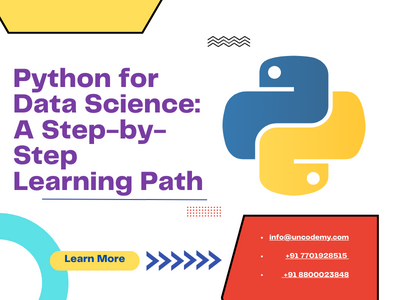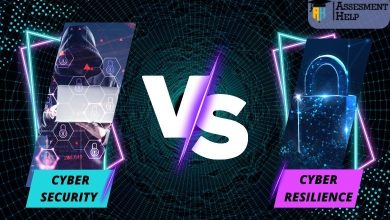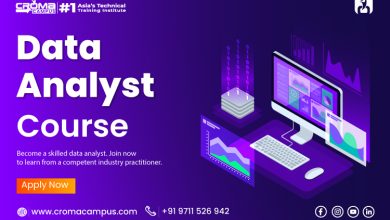Python for Data Science: A Step-by-Step Learning Path
Unlocking the Data Science Potential of Python in Chandigarh's Premier Course

Data Science has emerged as a pivotal field in the age of information and technology. Python, with its simplicity, versatility, and a plethora of libraries and tools, has become the go-to language for data scientists. Whether you’re an aspiring data scientist or a professional looking to enhance your skills, this step-by-step learning path will guide you through mastering Python for data science.
Step 1: Python Fundamentals
Before diving into data science, it’s crucial to build a solid foundation in Python. Familiarize yourself with the basics:
Variables and Data Types: Learn about variables, integers, floats, strings, and data structures like lists, tuples, and dictionaries.
Control Structures: Understand conditional statements (if, else), loops (for, while), and exceptions for error handling.
Functions: Grasp how to define and use functions, including the concept of arguments and return values.
Step 2: Libraries and Data Manipulation
Python’s power in data science lies in its libraries. Start with these essential ones:
NumPy: Master numerical computing with NumPy, which provides support for arrays and matrices, along with mathematical functions.
Pandas: Dive into data manipulation and analysis with Pandas, a library for handling structured data.
Matplotlib and Seaborn: Explore data visualization with Matplotlib and Seaborn to create insightful plots and graphs.
Step 3: Data Cleaning and Preprocessing
Real-world data is messy. Learn how to:
Handle Missing Data: Deal with missing values through imputation or removal, depending on the context.
Data Transformation: Transform data by scaling, encoding categorical variables, and feature engineering.
Outlier Detection: Identify and address outliers that can affect the quality of your analysis.
Step 4: Exploratory Data Analysis (EDA)
EDA is the process of understanding your data before diving into complex modeling. Learn to:
Summarize Data: Use statistics and visualization to summarize and understand your dataset’s characteristics.
Detect Patterns: Identify patterns, relationships, and correlations in your data.
Generate Insights: Extract valuable insights that can guide your data science journey.
Step 5: Machine Learning with Scikit-Learn
Scikit-Learn is Python’s go-to library for machine learning. Start with:
Supervised Learning: Understand algorithms like Linear Regression, Decision Trees, and Support Vector Machines for regression and classification tasks.
Unsupervised Learning: Explore clustering techniques like K-Means and dimensionality reduction with Principal Component Analysis (PCA).
Model Evaluation: Learn how to evaluate the performance of your models with metrics like accuracy, precision, recall, and F1-score.
Step 6: Deep Learning with TensorFlow and Keras
Deep Learning is at the forefront of AI. Dive into:
TensorFlow: Master the basics of TensorFlow, a powerful library for creating neural networks.
Keras: Simplify deep learning with Keras, a high-level neural networks API that runs on top of TensorFlow.
Building Neural Networks: Create deep learning models for tasks like image classification and natural language processing.
Step 7: Real-World Projects
Apply your skills to real-world projects to gain hands-on experience. Start with simple projects and gradually tackle more complex ones.
Predictive Modeling: Build models to predict outcomes, such as house prices, stock prices, or customer churn.
Image Classification: Create a deep learning model to classify images, such as identifying objects in photos.
Natural Language Processing: Work on text analysis projects, like sentiment analysis or chatbots.
Step 8: Advanced Topics
To become a data science expert, explore advanced topics such as:
Big Data: Learn to work with big data frameworks like Apache Spark and process large datasets efficiently.
Deployment: Understand how to deploy your data science models in production, whether it’s for a web application or as part of an automated system.
Data Ethics: Explore the ethical considerations in data science, including privacy and bias issues.
Read also : The Crucial Role of a Federal Appeal Lawyer
Conclusion: Enroll in the Best Python for Data Science Course
Mastering Python for data science is a rewarding journey that opens doors to exciting career opportunities. To accelerate your learning and gain guidance from experts, consider enrolling in the Best Python Course in Chandigarh, Noida, Delhi, Faridabad and all location in India. This course will provide you with structured learning, hands-on projects, and a supportive community to help you achieve your data science goals. As you progress through this step-by-step learning path, you’ll unlock the power of Python for data science and embark on a fulfilling and impactful career in this dynamic field. Don’t miss the opportunity to kickstart your journey with the best Python course in Chandigarh, where you can learn, grow, and excel in the world of data science.



